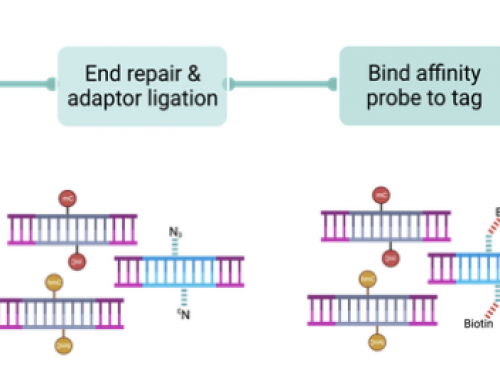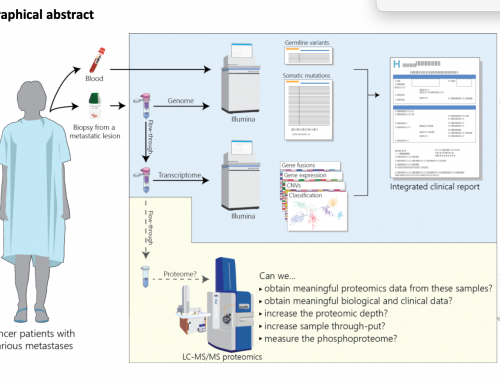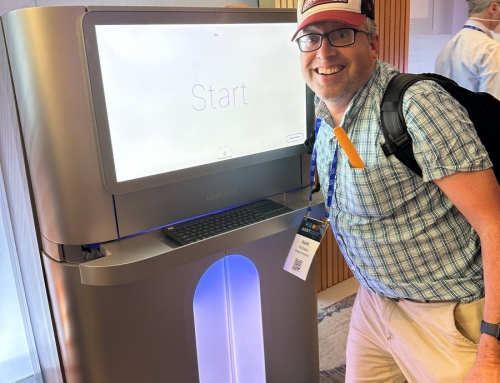Two publications presenting really cool technologies recently caught my attention: “Lego for molecular biology” and “CATCH-Seq: CRISPR for target enrichment sequencing”. Both are technologies I’d like to play with, and my son can join in the Lego modelling if we build some here in Cambridge!
Lego for molecular biology
Kevin Vittayarukskul and Abraham Phillip Lee from the Department of Biomedical Engineering at UC Irvine published a wonderful paper in January of this year where they describe their vision for modular, mass-produced, microfulidics. Their inspiration was Lego® (is it just Americans who pluralise with an “s”?). See: A truly Lego®-like modular microfluidics platform JMM 2017 (their work was featured in a couple of other blogs see here and here.)

They produced PDMS 2×2 “Lego” bricks from 3D-printed masters. The microfluidic Lego blocks can be stuck on standard Lego bases to create modular systems for molecular biology (and other) applications. Blocks can be stacked in 3D structures up to 3 layers in the current system. The limitations described in the publication were mainly around the use of PDMS only blocks. As these are semi-rigid they can flex whichcauses leaks at the interfaces of the block channels. The authors describe potential modifications to block construction that could reduce these issues.
I can imagine a Lego microfluidic kit that included ports to load samples and reagents, a pump interface and simple programming system (MindStorms for microfluidics), and “hardware” blocks that can heat or cool with built in peltier modules. Blocks might also be prepped to contain SPRI-beads locked inside for clean-up. Assuming Lego microfluidics can be built as cheaply as real Lego then the whole system might be disposable.
It was a shame that the authors did not include a demonstration of simple reaction chemistry e.g. ligation. A simple NGS workflow like Illumina TruSeq PCR-free or Rubicon TagSeq would have been an excellent demonstration!
CRISPR for target enrichment sequencing
CRISPR seems to get everywhere! A group from Tel Aviv University in Israel recently uploaded a preprint to BioRxiv: Cas9-Assisted Targeting of CHromosome segments (CATCH-Seq) for targeted nanopore sequencing and optical genome mapping. Two of the authors of this work were part of the team that published an earlier paper in Nature Comms 2015: Cas9-Assisted Targeting of CHromosome segments CATCH enables one-step targeted cloning of large gene clusters.

These papers demonstrate how CRISPR-Cas9 can be used to cut genomic DNA at specific loci releasing the DNA between cut-sites for sequencing in the CATCH-Seq method. Enrichment is not by pull-down (as the use of the term CATCH might suggest) but rather the targeted gDNA is selected by PFGE purification from high-molecular weight uncut gDNA. The method is capable of enriching large fragments and the authors demonstrate this by cutting the E. coli K-12 MG1655 genome (~4.5 Mb) at two sites (with a pair of guide RNAs) that flank a 200 kb region of interest. PFGE separation of the 200kb target from the gDNA massively enriches for the region of interest, and provides DNA suitable for long-read sequencing (Oxford Nanopore or PacBio) or optical mapping (BioNano Genomics).
Enrichment efficiency: The authors calculated the efficiency of CATCH-Seq targeting from the DNA recovery after PFGE at 40%, and MinION sequencing showed 99.6% alignment to E. coli, and half of those reads aligned to the 200 kbp target. As this fragment corresponded to less than 5% of the bacterial genome, they calculated a 10-fold target enrichment.
Making it work for your samples: The method relies on extraction of hmwDNA which is challenging and is likely to limit the application to high-quality samples. They use gel plug extraction from 12ug of DNA…try getting that from a needle biopsy!
For many applications 10-100kb is likely to be transformative so as long as DNA is larger than this then the method may be useful. I’m thinking that a CATCH-Seq panel of guideRNAs designed to DNA repair genes would be useful for phasing mutations in cancer samples e.g. BRCA, TP53, RAD51.
If you see interesting technology papers please do let me know!








Leave A Comment